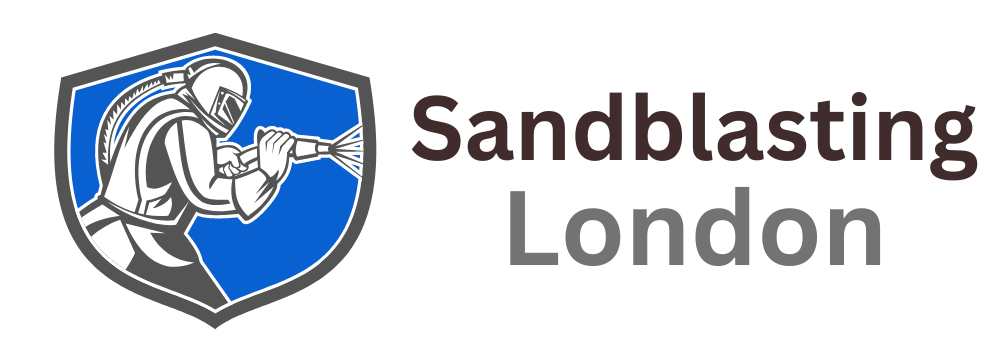The Best Sandblasting Media for Different Surfaces
Sandblasting is a highly effective method for cleaning and restoring a variety of surfaces. Whether you’re preparing metal for painting, removing graffiti from concrete, or stripping old finishes from wood, using the correct sandblasting media is crucial. Selecting the right media ensures the surface is treated properly without causing damage, resulting in a smooth and professional finish. In this guide, we’ll explore the best sandblasting media for different surfaces and why choosing the correct one is essential for your project’s success.
Sandblasting Media for Metal Surfaces
When sandblasting metal, the objective is often to remove rust, old paint, or coatings while preparing the surface for further treatment. Aluminium oxide is a popular choice for metal surfaces. This abrasive material is highly durable and effectively removes tough rust and old coatings, leaving the surface clean and ready for painting or other finishes.
For more challenging tasks, steel grit is another excellent option. Steel grit is more aggressive than aluminium oxide and is frequently used in industrial settings where a tougher approach is required. It leaves a smooth, polished finish on metal surfaces, ideal for recoating or painting after blasting.
Sandblasting Media for Wood Surfaces
Wood surfaces require a much gentler approach to avoid damaging them. The best media for sandblasting wood are corn cobs and walnut shells. These organic materials are soft enough to remove old paint or stains without damaging the wood grain. They are often used for restoring wooden furniture, decks, or even log homes, providing a gentle yet effective treatment.
For softer or more delicate wood, soda blasting is another suitable option. Soda blasting uses sodium bicarbonate, a gentle medium that can remove paint and stains without affecting the surface of the wood. This makes it ideal for antique wood restoration and other delicate wood projects.
Sandblasting Media for Concrete Surfaces
Concrete is a tough material that often requires an abrasive media to effectively clean or prepare it for further treatment. Silica sand is a traditional and commonly used sandblasting media for concrete surfaces. It works well for removing dirt, grime, and old coatings, leaving the surface clean and ready for sealing or painting. However, due to the health risks associated with silica dust, appropriate safety precautions must be taken when using this media.
An alternative to silica sand is glass beads, which can also be used on concrete surfaces. Glass beads are less abrasive and can add texture or create a polished look, depending on the desired outcome. This makes them versatile for various concrete treatments, from cleaning to surface finishing.
Sandblasting Media for Plastic Surfaces
When working with plastic, using a gentle media that won’t warp or damage the material is essential. Plastic beads are specially designed for sandblasting plastic surfaces. They are gentle enough to remove coatings without creating excess heat, which could potentially deform or warp the plastic.
Plastic bead blasting is commonly used in industries such as automotive and electronics, where precision and care are critical. This method ensures the plastic surface remains intact while removing any unwanted coatings or contaminants.
Sandblasting Media for Glass and Delicate Surfaces
Glass and other delicate surfaces need an extremely gentle approach. Soda blasting is one of the best options for sandblasting glass because it is non-abrasive. It effectively removes dirt, stains, or old coatings without scratching or damaging the surface, making it ideal for cleaning or restoring delicate materials such as glass windows, bottles, or other fragile items.
In addition to soda blasting, glass beads can be used for decorative purposes. Glass beads are often employed to etch designs onto glass, providing a fine level of control and detail. This method allows for precise work on glass without damaging the underlying material.
Choosing the correct abrasive blasting media is essential for achieving the best results on different surfaces. Whether you are working with metal, wood, concrete, plastic, or glass, selecting the right media ensures that the surface is cleaned, restored, or prepped without causing any unnecessary damage. For metal surfaces, aluminium oxide and steel grit are great options; for wood, corn cob, walnut shells, and soda blasting are ideal. Concrete benefits from silica sand and glass beads, while plastic surfaces are best treated with plastic beads. For delicate surfaces like glass, soda blasting or glass beads offer the right level of care and precision. By choosing the right abrasive sandblasting media, you can ensure a smooth and professional finish for your project.
At Sandblasting London, we pride ourselves on our expertise and experience in handling a wide range of sandblasting projects. Whether it’s restoring metal surfaces, cleaning concrete, or delicately treating wood or glass, we use the best sandblasting media for each specific job. Our professional team of sandblasters ensure that every surface is treated with care and precision, providing high-quality results that meet the needs of both residential and commercial clients. When you choose Sandblasting London, you are guaranteed safe, efficient, and reliable sandblasting services that deliver the best results every time.
Check our GBP update on the best sandblasting media for different surfaces.
Service Areas
Give us a call today!
